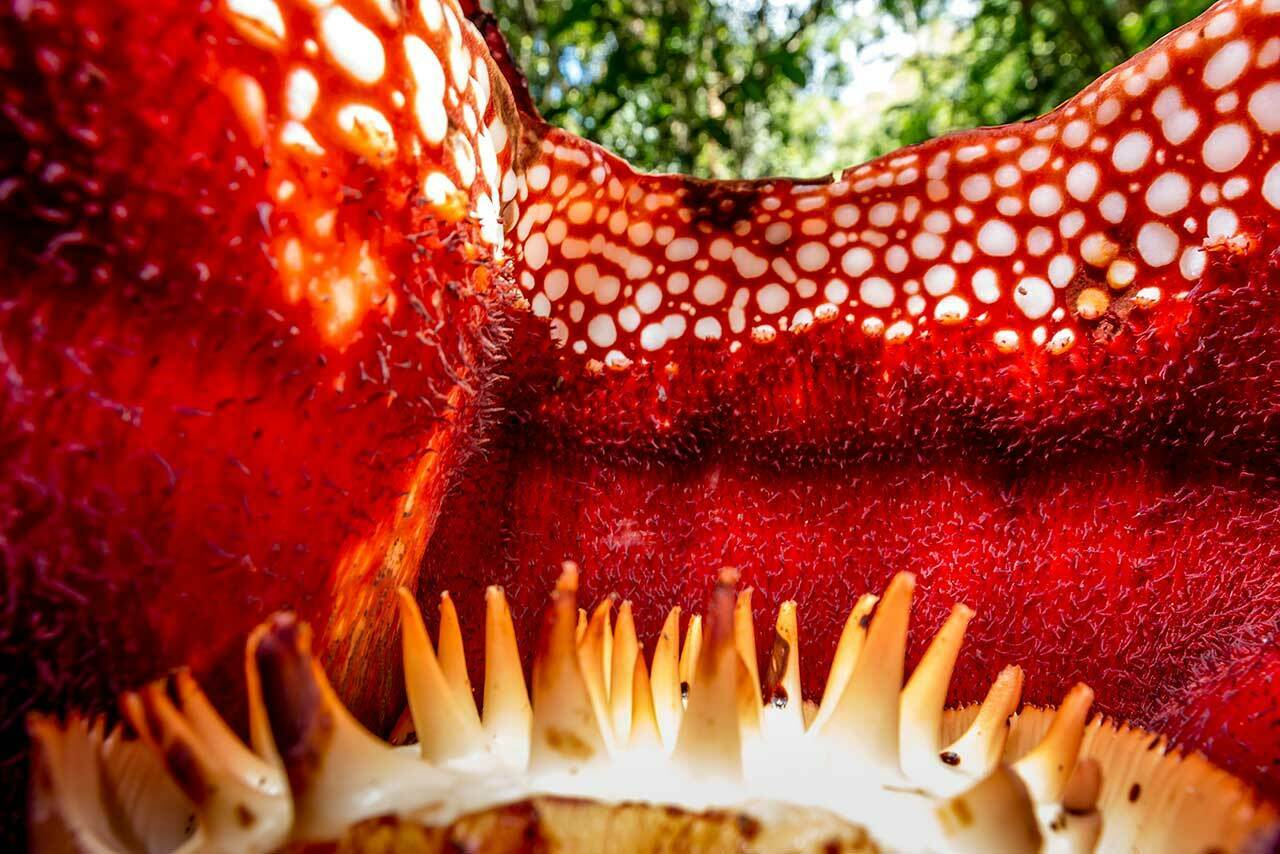If you're one of the many people who are into succulents, then you know that they are a great plant to have around. They're beautiful, they don't take up much space, and they're relatively easy to care for. However, there is a big difference between caring for succulents in your home and caring for them in the wild.
In the wild, succulents grow in some of the harshest environments on earth. They're used to blazing sun, little water, and poor soil. So when you bring them into your home, it's important to understand that they're going to need a bit more care than they're used to.
Lithops
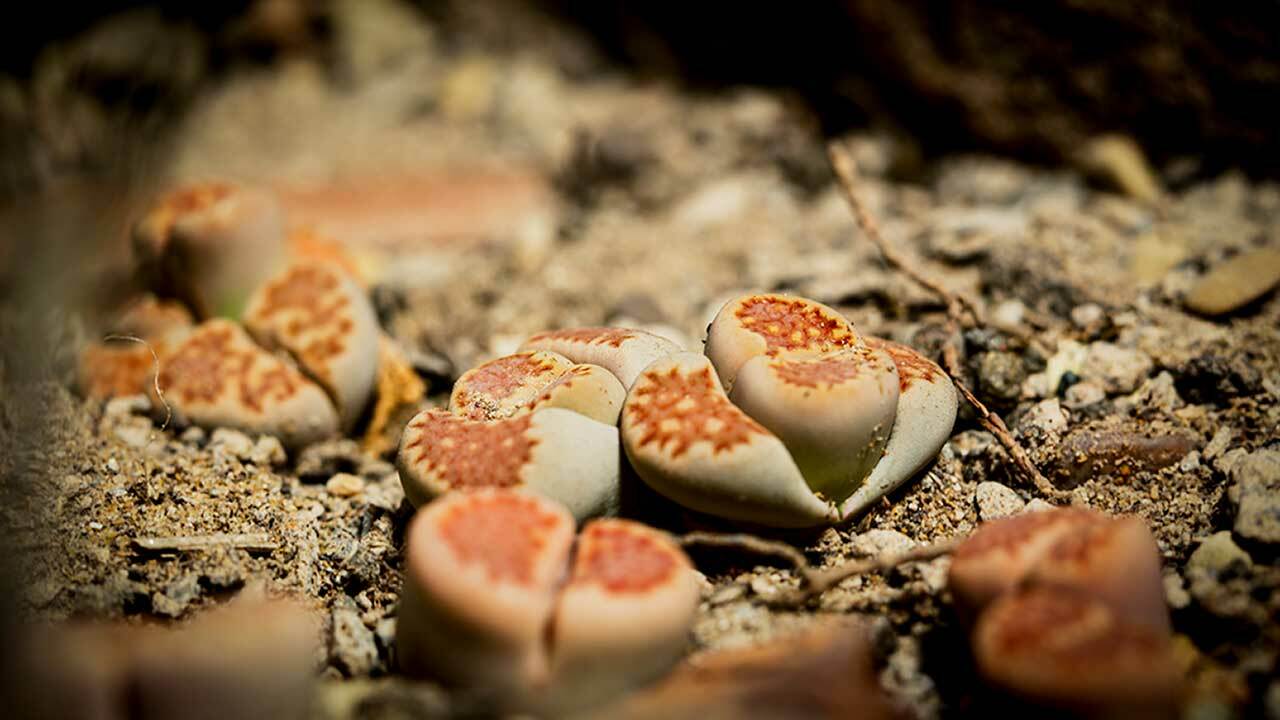
Lithops in the Desert
Lithops, or "living stones," are a type of succulent native to the deserts of Africa. These fascinating plants get their name from their appearance, which resembles rocks or stones. They grow in dry, arid environments and are used to surviving on very little water.
Lithops at Home
First off, it is important to understand that Lithops won't grow as large as they would in their natural habitat. When caring for Lithops in your home, they need very little water. In fact, too much water can be detrimental to their health. They should be watered only every two to three weeks, and even then, only enough to moisten the soil. The soil should be allowed to dry out completely between watering.
Lithops also need full sun to partial shade. If they're not getting enough light, they won't flower.
Saguaro Cactus
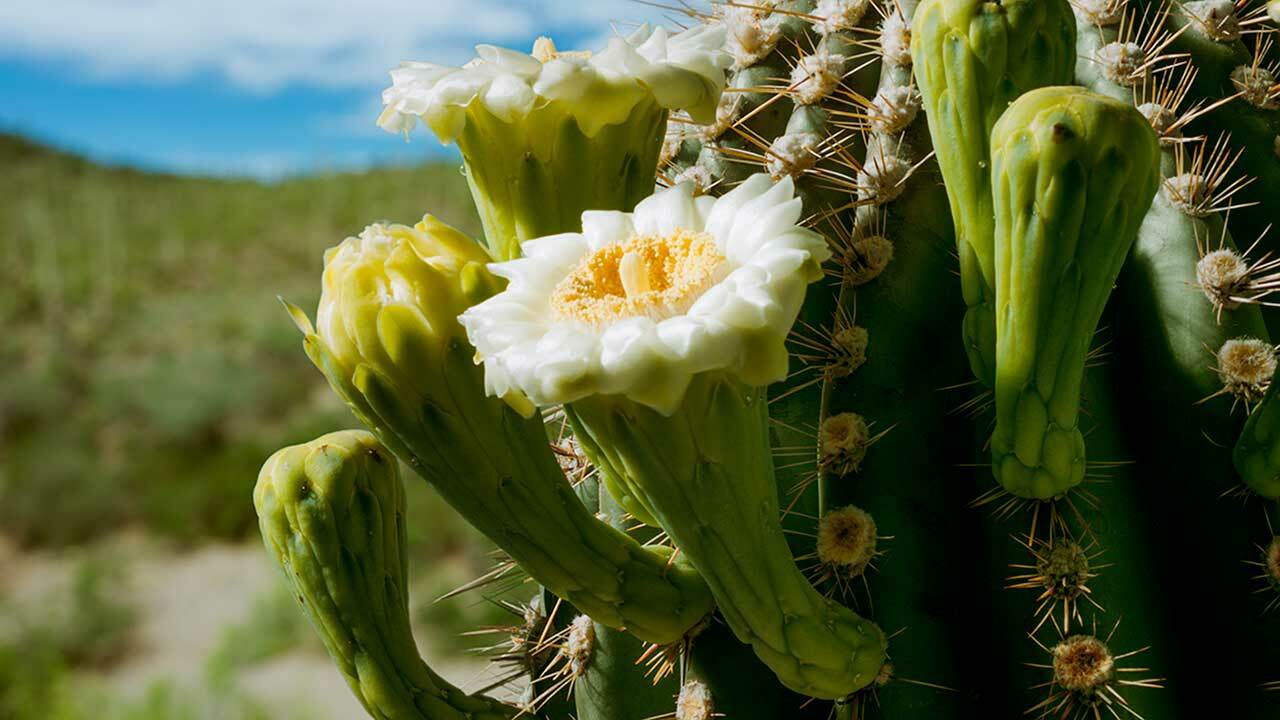
The Saguaro Cactus in the Desert
The saguaro cactus is one of the most iconic plants of the American Southwest and can grow to be over 50 feet tall and live for hundreds of years. They are native to the Sonoran Desert and are well-adapted to survive in hot, dry conditions.
Saguaro Cactus Flowers
The saguaro cactus is one of the few cacti that produces a flower. The flowers are white and only bloom for one night before they wilt and turn brown. It relies on nocturnal animals, such as bats and moths, to pollinate its flowers.
The saguaro cactus is also an important food source for desert animals. The cactus fruit, which is red or green, is a favorite of birds and small mammals.
How to Tell the Age of a Saguaro Cactus
The saguaro cactus can live to be over 200 years old. You can tell the age of a saguaro cactus by the number of arms it has. A saguaro cactus typically has one arm when it is between 50 and 75 years old. As the cactus continues to grow, it will produce more arms. A saguaro cactus with 10 arms is approximately 150 years old.
Caring for a Saguaro Cactus at Home
Saguaros are protected in the environs where they naturally grow; they cannot be uprooted and resold as decoration. However, they can be tended to if they already grow on your property. In fact, some might consider this an act of service!
Like lithops, saguaro cactus need very little water. When caring for them at home, they should be watered only every two to three weeks, and only enough to moisten the soil. The soil should be allowed to dry out completely between watering.
Saguaros also need full sun. If they're not getting enough light, they will become etiolated, which means they will stretch out and become thin and leggy.
Remember, they're used to harsh conditions, so just a little TLC will go a long way!
Creosote Bush

The Creosote Bush in the Desert
The creosote bush is a common shrub in the deserts of North America. It is tolerant of hot, dry conditions and can live for hundreds of years. The creosote bush gets its name from the creosote oil that it produces. This oil has a strong, pungent smell that many people find unpleasant.
Creosote Bush Flowers
The creosote bush is an important food source for desert animals. The leaves are high in protein and are eaten by rodents and rabbits. The flowers are also a favorite of bees and other pollinators. Its flowers are small and yellow and it blooms in the spring and early summer.
Caring for a Creosote Bush at Home
While the creosote bush is tolerant of hot, dry conditions, it does not like to be waterlogged. When caring for a creosote bush at home, water it only when the soil is dry to the touch. Allow the soil to dry out completely between watering.
The creosote bush also needs full sun to partial shade. If it's not getting enough light, it will become etiolated and stretch out.
While creosote bushes are low-maintenance plants, they do require a bit of care to thrive in your home. With a little TLC, you can enjoy these desert beauties for years to come!
Support your local PBS station in our mission to inspire, enrich, and educate.
Cholla Cactus
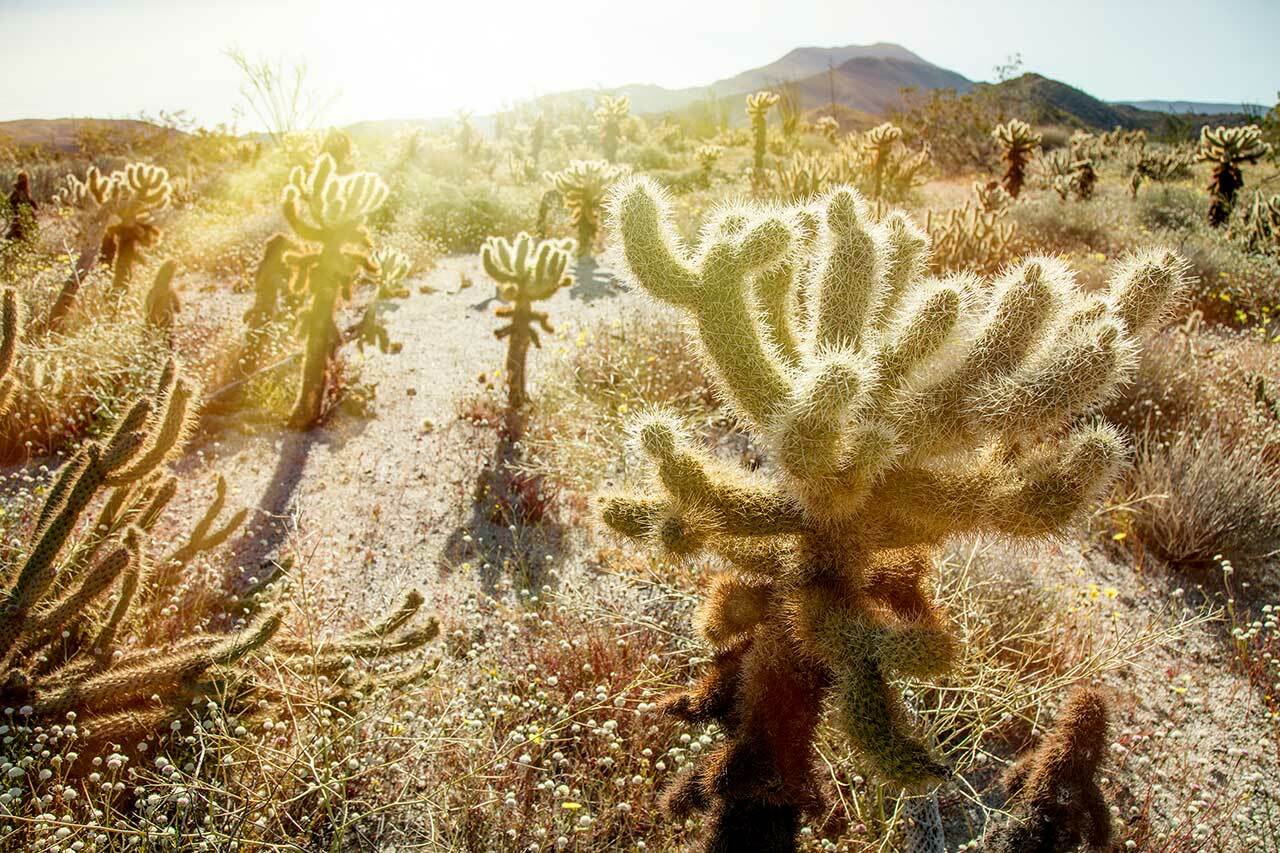
The Cholla Cactus in the Desert
The cholla cactus is a common sight in the deserts of North America. It is easily recognizable by its segmented stems and barbed spines. Chollas are often called "jumping cacti" because their barbed spines can easily become detached and stuck in your skin.
Cholla Cactus Flowers
The cholla cactus flowers in the spring and early summer. The flowers are small and yellow, and they are pollinated by bees and other insects.
The cholla cactus is also an important food source for desert animals. The fruits of the cactus are eaten by birds and small mammals.
Benefits of the Cholla Cactus
The Cholla cactus has many benefits. It is a source of food and water for desert animals. The barbed spines of the cactus can also be used to make needles and fish hooks.
The cholla cactus is also known for its medicinal properties. The pulp of the cactus has been used to treat diabetes and osteoporosis.
Caring for a Cholla Cactus at Home
Chollas need very little water. In the wild, they receive the majority of their moisture from the morning dew. When caring for them at home, water them only when the soil is dry to the touch. Allow the soil to dry out completely between watering.
Chollas also need full sun to partial shade. If they're not getting enough light, they will become etiolated and stretch out. Chollas are low-maintenance plants that are well-suited for beginner gardeners.
Stapelia
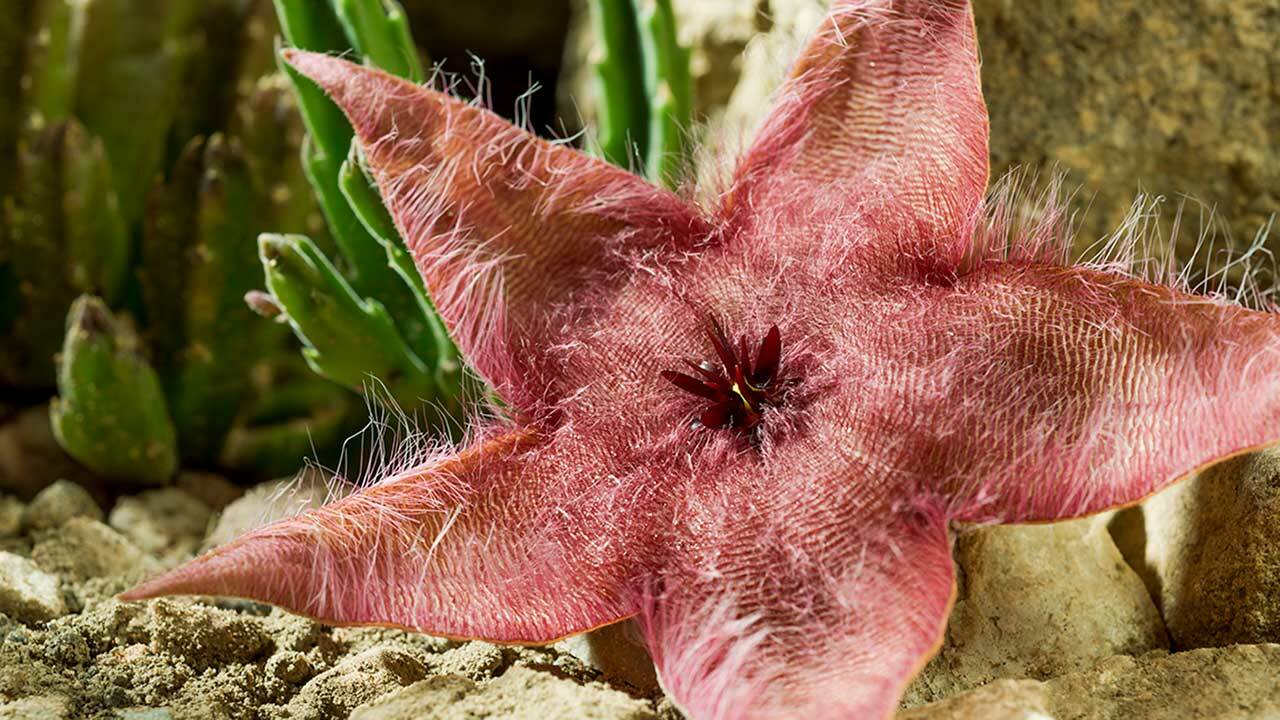
Stapelia in the Desert
Stapelia is a genus of succulent plants that are native to Africa. The most well-known species is Stapelia gigantea, which is also known as the "carrion flower" or "starfish cactus.” Stapelias are characterized by their large, fleshy flowers that smell like rotting flesh.
While the smell of the stapelia flower may be off-putting to some, it is actually an important part of the plant's life cycle. The odor attracts flies and other insects, which pollinate the plant.
Stapelia Flowers
The flowers of the stapelia are large and fleshy. They range in color from white to pink to purple. The center of the flower is often striped or spotted. The flowers are pollinated by flies and other insects. These insects are attracted to the odor of the plant, which smells like rotting flesh.
Caring for a Stapelia at Home
Stapelias are low-maintenance plants that are well-suited for beginner gardeners. They need full sun to partial shade and should be watered only when the soil is dry to the touch. Allow the soil to dry out completely between watering.
While the smell of the stapelia flower may be off-putting to some, it is an important part of the plant's life cycle. The odor attracts flies and other insects, which pollinate the plant.
Primrose

Primrose in the Desert
Primrose is a genus of flowering plants that are native to the Northern Hemisphere. The most well-known species is Primula vulgaris, which is also known as the "common primrose.” Primroses vary in size depending on the species. The common primrose, for example, can grow to be up to 12 inches tall.
Primrose Flowers
Primroses are characterized by their showy flowers that come in a variety of colors. They are pollinated by bees, butterflies, and other insects.
Caring for a Primrose at Home
Primroses are low-maintenance plants that are well-suited for beginner gardeners. They need full sun to partial shade and should be watered only when the soil is dry to the touch. Allow the soil to dry out completely between watering.
Primroses are deer resistant and can be planted in areas where deer are a problem.
Primrose Companion Plants
When growing primroses, it's important to choose the right companion plants. Good companions for primroses include other shade-loving plants such as ferns, hostas, and impatiens. Avoid planting primroses with sun-loving plants such as tomatoes and cucumbers.
Summary
No matter which species you choose, succulents are easy-to-care-for plants that can add natural beauty to any home or garden. Whether you live in the suburbs or in a city apartment, you're bound to have the perfect place for it to grow.
This article was researched and compiled by Sandler Digital in collaboration with PBS.
Explore More of The Green Planet

